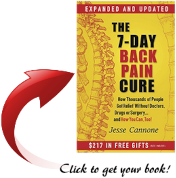Inflammation is a crucial immune response that helps the body combat infections, repair damaged tissues, and initiate the healing process. However, when inflammation becomes chronic or uncontrolled, it can make chronic pain worse and keep it going for a long time. And before we continue, I want to let you know that I am not a medical professional and what follows is not medical advice. I found this information interesting, and hopefully you do, too.

In the context of chronic pain, persistent inflammation can arise from various sources, such as tissue injury, autoimmune disorders, or repetitive stress. In this ongoing inflammatory condition, certain immune cells become active. These cells release a series of chemicals that cause inflammation to continue and worsen.
Furthermore, the body’s central nervous system can also play a crucial role in chronic pain. It can release pro-inflammatory chemicals that contribute to the brain getting overly excited and sending signals more frequently than it should. This response can amplify pain signals and contribute to the persistent nature of chronic pain conditions. The immune cells in the brain and spinal cord release chemicals that can sensitize the nerves responsible for transmitting pain signals.
This sensitization makes the nerves more responsive to pain, causing them to send pain signals to the brain even when there is no apparent injury or ongoing damage. This persistent activation can result in chronic pain, where pain signals continue to be sent to the brain for an extended period. The brain interprets these signals as ongoing pain, even though the initial injury may have healed or the underlying issue resolved. This is why chronic pain can persist long after the initial injury or condition has resolved.
It is important to note that the relationship between inflammation and chronic pain is complex and like a two-way street. While inflammation can contribute to chronic pain, chronic pain itself can cause the inflammation to stick around and not go away, creating a vicious cycle. Prolonged pain signals can activate and sensitize immune cells, further amplifying the inflammatory response.
Here are additional references to help you delve deeper into this topic:
- Physiological Reviews. Beyond neurons: Evidence that immune and glial cells contribute to pathological pain states
- Trends in Neurosciences. Central sensitization and LTP: Do pain and memory share similar mechanisms?
- Nature Neuroscience. Neurogenic inflammation and the peripheral nervous system in host defense and immunopathology
- Dove Medical Press. The Role of Neuro-Immune Interactions in Chronic Pain: Implications for Clinical Practice

The above references provide in-depth insights into the role of inflammation in chronic pain and the interplay between the immune system, the body’s central nervous system, and pain signal pathways. Exploring those sources may help you gain an overall understanding of the subject matter.
To Your Success & Freedom,
Glenn Shimabukuro



